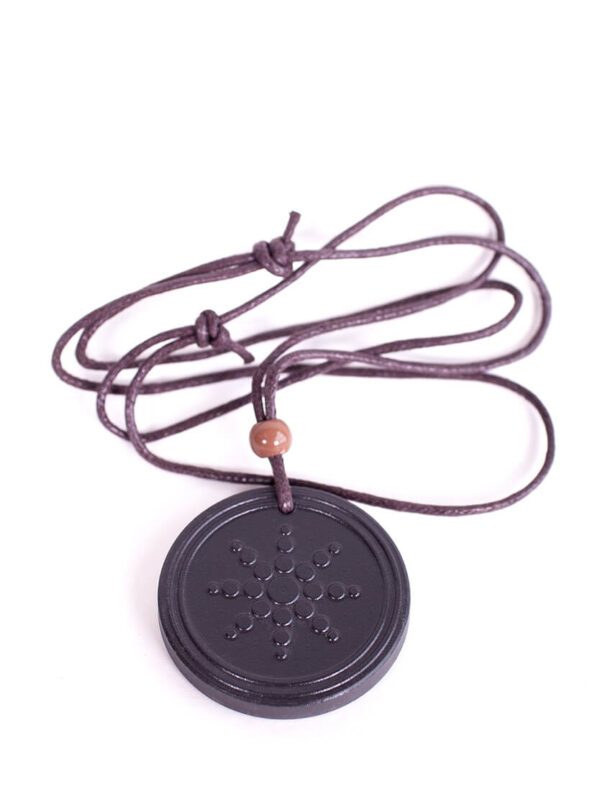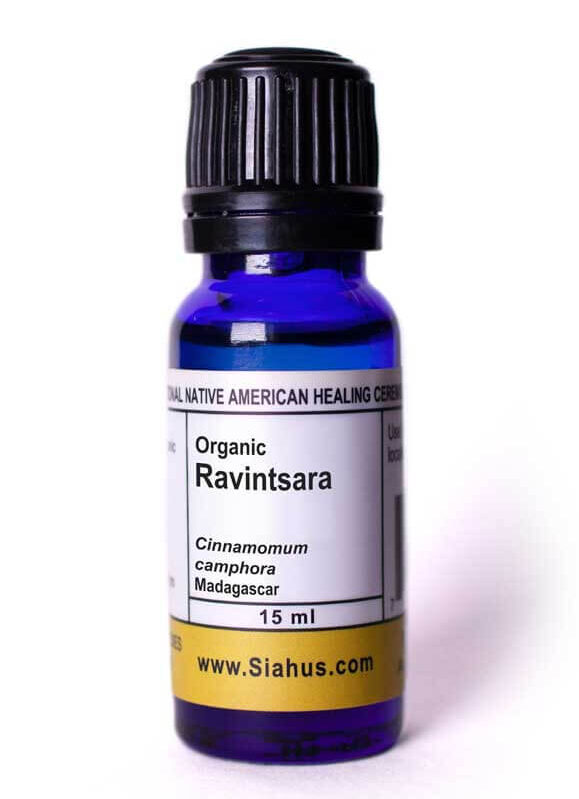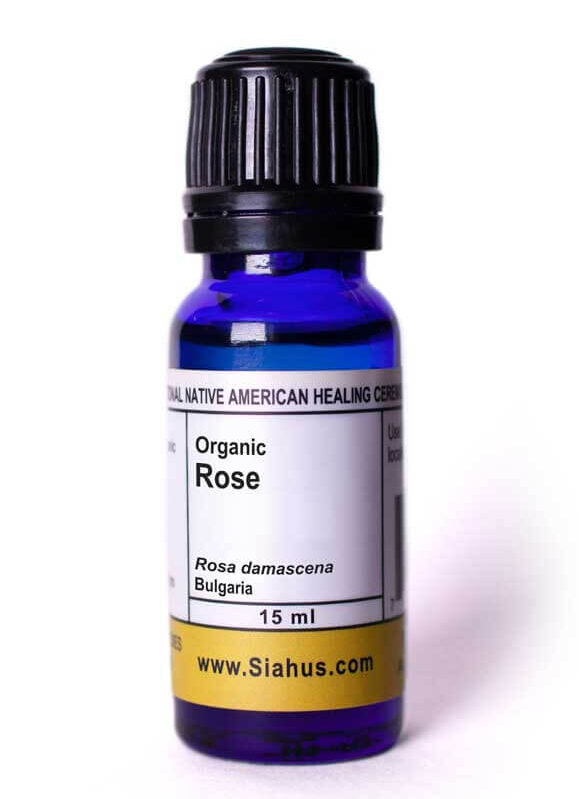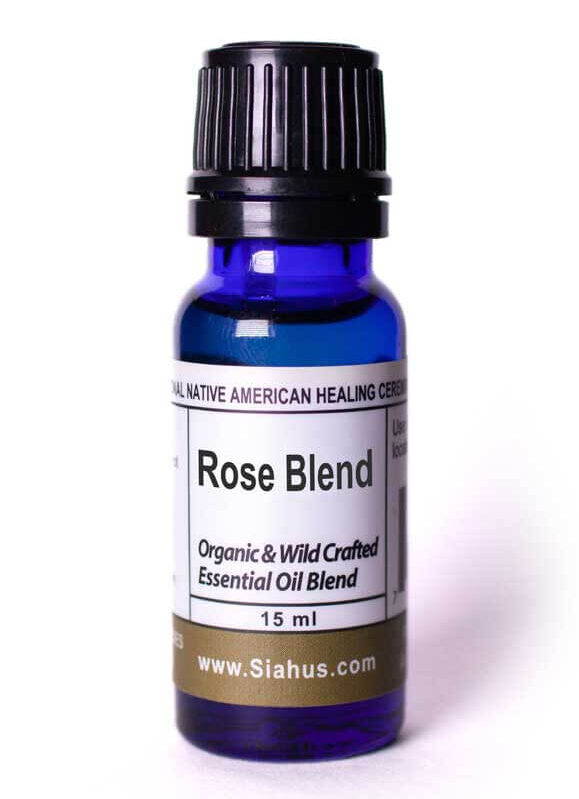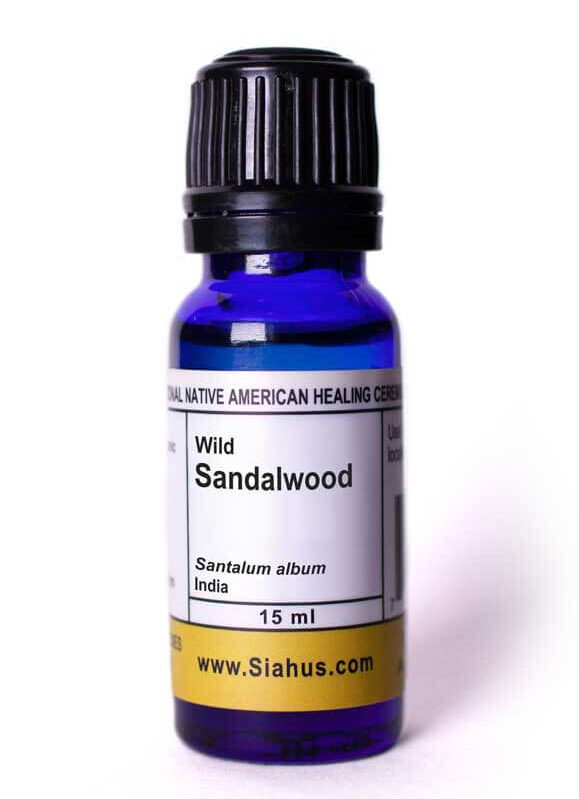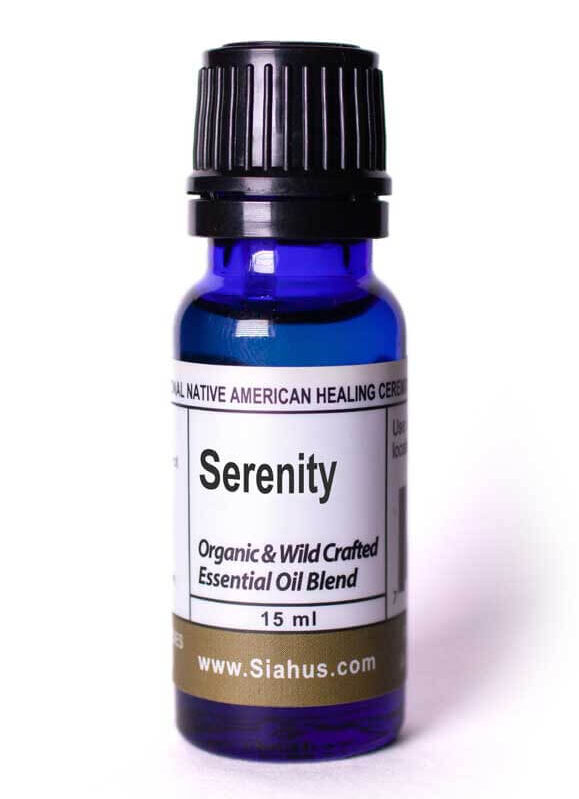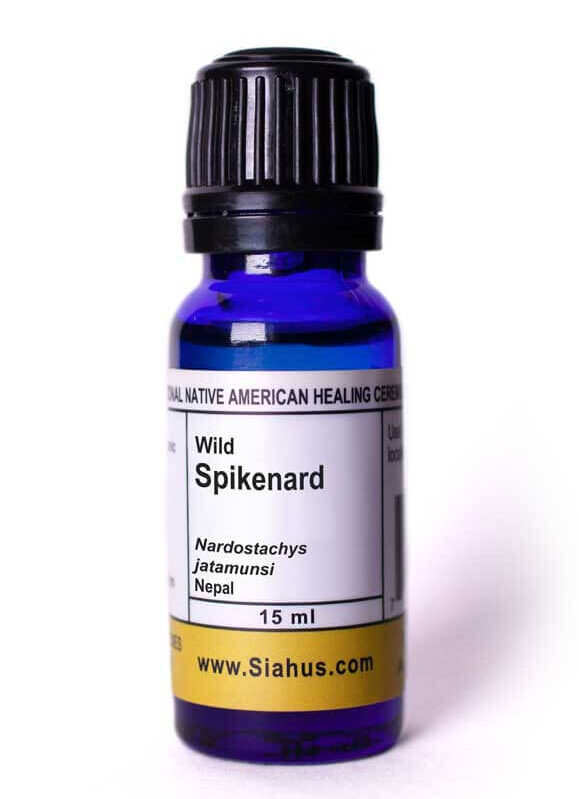-
×
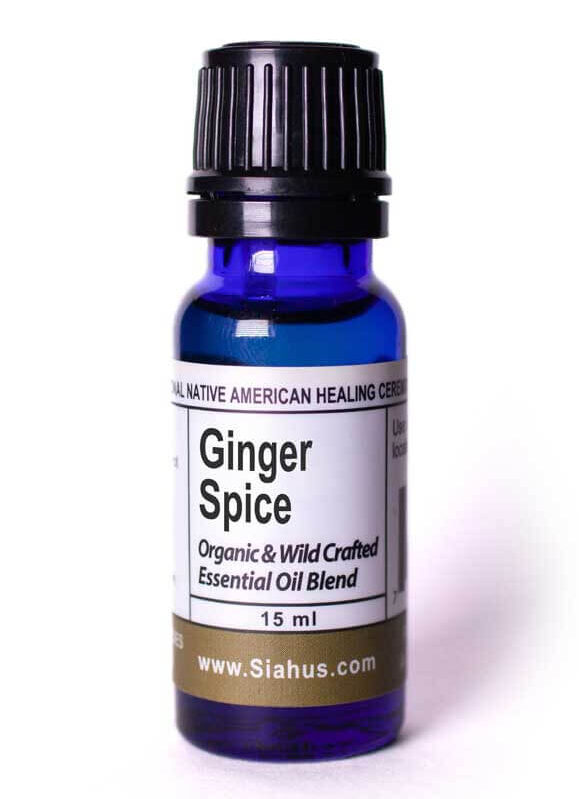
Ginger Spice
$12.00
Categories: Essential Oil Singles
Ravintsara
$25.00
Man Found Standing Writes:
Ho Leaf, (Ravintsara) Organically Grown: Madagascar (Cinnamomum camphora)
Ho Leaf, also called Ravintsara, is a tall evergreen tree that was native to Asia but is now grown in many other countries. The essential oil was first distilled in the 1800’s from the leaves, twigs, or the wood of trees that were at least 20 years old. It has a very camphor-eucalyptus scent and was commonly used in flavorings, household products, soaps, and pharmaceuticals.
Up to WWII, the production of Ho Leaf for commercial use was a major industry for the Japanese government. It monopolized this prized tree to producemedicines and as additives to make different industrial products like smokeless gunpowder, plastics, and so forth.
In Ayurvedi medicine, Ho Leaf was used to increase the life force or energy that opens the senses, calms the nerves, and dispels negative energies. It was also used for protection and purification ceremonies. This oil has often been referred to as the “oil that heals”.
Primary Usages: Assists with respiratory issues (colds, bronchitis, congestion, fevers, pneumonia, sinusitis, sore throats, coughs, the flu, lung infections, allergies, eases breathing), viral infections (hepatitis, herpes, cold sores, cholera, mononucleosis), aids with wound healing (antiseptic, cuts, burns, bruises, sprains, Shingles, chicken pox,), and bacterial skin infections (athlete’s foot, ring worm).
Secondary Usage: Aids with nerves (insomnia, stress, fatigue), helpful with rheumatic conditions (inflammation, joints, muscle pain, circulation), assists with emotional issues (anxiety, stress, depression, fear, self-confidence), and is use as an effective insect repellant.
Has Been Reported: Used to assist the liver.
Descriptor: Decongestant, Expectorant, Antiseptic, Antimicrobial, Immune Stimulant, Antispasmodic, Nerve Tonic
Application: Inhale, diffuse or apply topically.
Caution: Avoid take any internally and application near infants because of the risk of spasm of glottis, due to cooling effect on respiratory system.
Found In: Breathe Ease, Fortify, Hair Support
Influences: Assists to release grief from the heart, eases anxiety, and promote feelings of hope. Affects the solar plexus and the heart chakras.
Medicine Wheel: A Primary North.
Blends Well With: Basil, Bergamot, Black Pepper, Black Pine, Cardamom, Cedarwood, Cinnamon Bark, Clary Sage, Clove Bud, Eucalyptus, Fir Needle, Grapefruit, Helichrysum italicum, Lavender, Lemon, Mandarin, Marjoram, Orange, Oregano, Palmarosa, Peppermint, Pine Needles, Rosemary, Sandalwood, Tangerine, Tea Tree, Thyme
Country of Origin: Madagascar, Organic
Botanical Name: Cinnamomum camphora
Plant Part: Leaves
Note: Medicinal Scent, a Camphorous Aroma with Woody Notes
$25.00
Categories: Essential Oil Blends
Rejuvenate
$15.00
List of Ingredients: Wild, Ethically Farmed and Organic Essential Oils of Lemon, Orange, Black Cumin, Fennel, Peppermint, Neem, Clove Bud, Ginger Root, Ravintsara, Palmarosa, Spearmint, Cinnamon Bark, Lavender, Sandalwood, Helichrysum italicum, and Frankincense of base of 66% Fractionated Coconut Oil.
Man Found Standing says: Rejuvenate is a general, all around maintenance essential oil, a powerful purifier, has a positive effect on all the systems of the body, and supports physical energy. It has been found to be effective against bacteria, viruses, parasites, inflammation, fungus, antiseptic, tumors, catarrh, and depression. It is stimulating, strengthening, detoxifies the liver and kidneys, cleanses the blood, and stimulates red and white blood cell formation. It is very effective for nervous conditions, impaired digestion, water retention, pulmonary and lymphatic congestion, infections of any kind, poor circulation, allergies, skin disorders, and viruses.
Rejuvenation relieves mental fatigue, sharpens senses, improves concentration and memory. It is beneficial for muscle cramps, aches, pains, spasms, swollen glands, strengthens the heart, and assists in balancing the metabolism. This combination of copals promotes health, assists in repairing damage done to the body through the use of nicotine and other addictive substances, and curbs the desire for those substances.
Traditional Application: Apply on the back, in a full body massage using the Rejuvenation Technique and on the feet using the Vita Flex. I like to use ten drops on my salad to add new zest to the dressing. A drop under the tongue several times a day has been known to assist in stopping smoking. One person reported using the Rejuvenate for a Brown Recluse spider bite with good results.
Companion Essential Oils: Spice Traders, Fortify, Oregano, Cypress, Basil, and Frankincense
$15.00
Categories: Essential Oil Kits
Rejuvenation Technique Kit
$186.15
Rejuvenation Technique Kit
Contains: Basil, Courage, Cypress, Geranium, Helichrysum Blend, Juniper, Marjoram, Rejuvenate, Sports Pro, Spruce and F.C.O oil with a 10 Hole Green Fabric Case. Save 10%.
$186.15
Categories: Essential Oil Blends
Resp Ez
$21.00
List of Ingredients: Wild, Ethically Farmed and Organic Essential Oils of Ravintsara, Rosemary, Pine, and Lime.
Man Found Standing says: It assists with respiratory problems and goes along with the Breathe-EZ. When a liquid essential oil is used without seeing much of a benefit it is suggested you “try another essential oil.” Resp-EZ was added to our line because of the benefits noticed from this combination. It is a wonderful essential oil to use to stimulate circulation, fight colds, coughs, flu, sore throats, fevers, bronchitis, sinusitis, and strengthens the immune system. It has the ability to clear mucus quickly, is beneficial for nervous exhaustion, and assists stress related conditions.
Traditional Application: Massage over the chest area and on the back (the lungs are actually closer to the back so remember this area) and apply a wet hot towel compress. Massage on the top and bottoms of the feet near the toe area.
Companion Essential Oils: Breathe-EZ, Ravintsara, Rejuvenate, Oregano (diluted), Fortify, and Hyssop
$21.00
Categories: Essential Oil Singles
Rose
$550.00
Man Found Standing Writes:
Rose, Organic: Bulgaria (Rosa damascena)
The therapeutic Rose we use is actually a hybrid derived from two or three different species that originally came from the Gulf of Persia. In the 10thcentury, the first Rose oil was distilled by a Persian physician, with the distillery existing up until 1612. Also, during the 16th century, Turkish merchants imported roses for cultivation in Bulgaria and Turkey. Soon Bulgaria became known for its high-quality oil and was the world’s largest exporter.
When the flowers are ready, they must be handpicked early in the morning and distilled immediately before any major loss of oil. Rose is one of those special oils that use the double steam distilled extraction methods to obtain the complex chemistry found in the therapeutic oil. The pure therapeutic oil is highly concentrated and it takes about ninety pounds of rose petals to make 15ml of oil.
Pure Rosa damascene goes solid at just below room temperature and has more of a honey like fragrance that is quite intense. Normally people prefer it highly blended to a gentler aroma. Due to the high price of pure quality oil, the Rose market is flooded with inferior quality and adulterated oil.
Primary Usages: Assists with emotional issues (depression, low self-esteem, shock, anger, nervous tension, trauma, calming, relaxing, anxiety, grief), skin conditions(regeneration, broken capillaries, herpes, shingles, burns, acne, inflammation, blemishes, skin elasticity, scars, dermatitis, wrinkles, wounds, stretch marks, eczema), and used as an aphrodisiac (sexual problems, impotency, frigidity, lack of interest).
Secondary Usages: Assists with heart problems (poor circulation, palpitations, arrhythmia, high blood pressure, high cholesterol),respiratory issues (asthma, coughs, bronchitis, tuberculosis, sore throats, hay fever, spasms), balances hormones (menstrual issues, infertility), fights infections (strep, staph, E. coli, anthrax), stimulates the immune system, aids uterine disorders, and assists digestive issues (cholera, diarrhea, nausea, food poisoning).
Has Been Reported: Has been used internally as a tonic for the liver and gallbladder as well as a support for the release of emotional trauma. Used in many perfumes and cosmetics.
Descriptor: Anti-Depressant, Sedative, Nervine, Regenerative, Antiseptic, Antispasmodic, Aphrodisiac, Astringent, Tonic
Application: Apply topically on location, over the heart, and inhale.
Caution: Hormonal support so use with caution while pregnant.
Found In: Circulate, DNA Release, Rose Blend, Ageless, Balance
Influences: Creates a sense of wellbeing, loved and enhances spirituality and meditation. Wonderful oil to smell and rub over the heart and ears in times of emotional hardship.
Medicine Wheel: A Primary Center and Secondary South.
Blends Well With: Bergamot, Geranium, Jasmine, Lavender, Roman Chamomile, Ylang Ylang
Country of Origin: Bulgaria, Organic
Botanical Name: Rosa damascena
Plant Part: Flower
Note: Flowery Sweet Honey Like
$550.00
Categories: Essential Oil Blends
Rose Blend
$28.00
List of Ingredients: Wild, Ethically Farmed and Organic Essential Oils of Rose in a base of 97% Fractionated Coconut Oil.
Man Found Standing says: This is an affordable way to experience the wonderful benefits of Rose that has an extra ordinarily complex chemistry with over 300 known constituents. It enhances the frequency of every cell bringing balance and harmony to the body; and is said to be beneficial for depression, spasms, anthrax, bactericidal against strep, staph, E. coli, diphtheria, diuretic, and hemostatic (anti-hemorrhagic). Rose is a nerve sedative, stomachic, an antiseptic, and a tonic for the heart and liver.
This blend may be beneficial for hemorrhaging, infections, asthma, chronic bronchitis, tuberculosis, ulcers, sprains, conjunctivitis, herpes, shingles, radiation burns, thrush, eczema, gingivitis, wrinkles, broken capillaries, skin disease, wounds, scarring, and revitalizes and rejuvenates dry, sensitive, or aging skin. Great to use on babies. Rose is stimulating and elevating to the mind, creates a sense of well-being, assists release past hurts, and brings a feeling of love.
Traditional Application: On the ears, forehead, temples, over the heart, or in a massage.
Companion Oils: Peaceful, Balance, and Love
$28.00
Categories: Essential Oil Singles
Sage
$20.00
Man Found Standing Writes:
Sage, Organic: Hungary (Salvia fruticosa miller)
Sage is a perennial herb native to the eastern Mediterranean region and has been use therapeutically for thousands of years. The Mediterranean or Greek Sage is quite similar to White Sage that the Native Americans use in their spiritual ceremonies and traditional medicine. Historically Sage was considered divers and “cure all” from whitening the teeth, a spice for flavoring, spiritual usages, strengthening the mind, stopping body trembling, liver disease, anti plague remedy, assist female issues, pain, and so forth. There was a Latin saying of, “Why should a man die whilst there is Sage growing in the garden?”
With hundreds of different species of Sage, you will mostly find on the market the Salvia fruticosa, high in the chemical Cineol and the Salvia officinalis, high in the chemicals of Thujone and Camphor. Both verities of sage should be used in moderation but the Greek Sage is considered more of an overall therapeutic essential oil. Carful distillation is needed to keep the Cineol content lower, around thirty seven percent, and therefore increasing the other therapeutic properties found in the oil.
Primary Usage: Strengthens the vital centers, assists digestion (balancing, metabolism, laxative), glandular disorders, balance hormones (improves estrogen and progesterone-testosterone balance, menstruation, menopausal symptoms), and actives the nervous (adrenal cortex),lymphatic, liver, urinary and pulmonary systems.
Secondary Usage: Assists with the respiratory system (mucus, colds, bronchitis, asthma, tuberculosis, coughs, sinusitis, flu, congestion, pneumonia), skin conditions (acne, psoriasis, eczema, edema, dandruff, hair loss, wounds, athletes foot, ring worm, astringent) and is used as a disinfectant.
Has been reported: Assists cellulites, edema, gingivitis, night sweats, pain relief (sprains, joint issues, rheumatism, arthritis). Beneficial for use as a deodorant and insect repellent.
Descriptor: Hormonal Balancing, Tonic, Stomachic, Expectorant, Antiseptic, Analgesic, Diuretic, Insect Repellant
Application: Diffuse or apply topically.
Caution: Avoid taking internally or application larger amounts near infants and sensitive individuals. Can have a cooling effect on the respiratory system.
Found In: Vitality
Influences: Relieves depression, mental fatigue, strain, and dispels negative energies. Considered a spiritual protective and cleansing oil.
Medicine Wheel: A Primary West and Secondary North.
Blends Well With: Bergamot, Grapefruit, Hyssop, Lavender, Lemon, Lime, Orange, Rosemary, Rosewood, Tangerine, Thyme
Recipes: For an immune system stimulant blend two drops each of Sage and Rosemary with one drop each of Black Pepper and Lemon. Mix with a carrier oil and massage into chest morning and evening.
Country of Origin: Hungary, Organic
Botanical Name: Salvia fruticosa miller
Plant Part: Leaves and Flowers
Note: Pungent and Herbal
$20.00
Categories: Essential Oil Singles
Sandalwood
$134.00
Man Found Standing Writes:
Sandalwood, Wild: India (Santalum album)
For millennia, the Sandalwood tree was valued as one of the most sacred trees that the Creator has given us by three major religions of the world, Buddhism, Hinduism, and Islam. Parts of the tree are used in the religious ceremonies and for religious artifacts. Over the past decade, the price for pure therapeutic Sandalwood has increased dramatically due to the shortage of trees, it’s the growing popularity, and the Indian government’s regulations on exporting Sandalwood products.
There are different types of Sandalwood found throughout the world, but the oil from India is considered the best. We have found that even slightly higher therapeutic oil can be extracted exclusively from the slowly steamed roots of the dying mature trees. The added labor costs and government restrictions have basically eliminated this oil being sold exclusively any more.
Primary Usage: Assists emotion issues (stress, self-confidence, negativity, grief, depression, fear, obsessions, egocentric behavior, loneliness, balancing) and assists to removes negative programming from the cells. A tonic for the urinary tract, kidneys, bladder (edema, cystitis, diuretic), lymph, immune system, and nerves(neuralgia, muscles spasms, sciatica). We have seen Sandalwood stop a seizure from developing and is wonderful to assist in bringing a person back into balance after a seizure. Just rub a drop on the ears and put a small amount under the nose.
Secondary Usages: Assists respiratory problems (bronchitis, coughs, catarrh, sinusitis, strep, staph, earaches, laryngitis, congestion), and heart issues (cardiac fatigue). Very helpful for skin issues (wounds, psoriasis, eczema, wrinkles, boils, dry, scalp, hair, scars, antiseptic, astringent), digestion (cholera, nausea, gastritis, diarrhea, fat metabolism), insomnia, impotence, and as anaphrodisiac.
Has been reported: Increases oxygen levels and relieves inflammation around the pituitary and pineal glands. Good results for treating hemorrhoids.
Descriptor: Antidepressant, Digestive, Diuretic, Anti-Inflammatory, Antiseptic, Restorative (Skin), Stimulant(Brain and Circulatory)
Application: Inhale or diffuse. Apply on feet, body, or on injured area. Take a few drops internally. A powerful anointing oil.
Caution: No special cautions.
Found In: Courage, DNA Release, Balance
Influences: Calming, grounding, and assists meditation in connecting with your spirituality.
Medicine Wheel: A Primary East and Secondary Center, North, and West.
Blends Well With: Bergamot, Black Pepper, Cedarwood, Chamomile, Cinnamon Bark, Clary Sage, Clove Bud, Coriander, Cypress, Elemi, Fennel, Frankincense, Geranium, Ginger Root, Grapefruit, Jasmine, Lavender, Lime, Mandarin, Myrrh, Neroli, Orange, Palmarosa, Patchouli, Peppermint, Rose, Rosewood, Tangerine, Vanilla, Vetiver, Ylang Ylang
Country of Origin: India, Wild
Botanical Name: Santalum album
Plant Part: Roots
Note: Rich, Earthy, Balsamic, and Sweet
$134.00
Categories: Essential Oil Blends
Serenity
List of Ingredients: Wild, Ethically Farmed and Organic Essential Oil of Orange, Tangerine, Patchouli, Lime, Blue Tansy, Ylang Ylang Extra, Lavender, Citronella, and German Chamomile.
Man Found Standing says: Serenity promotes relaxation allowing us to relax so the blood can get up to the brain. It is grounding and integrates energy allowing us to visualize our goals and dreams more vividly and accurately. Serenity assists in reducing depression, eases anxiety, stress, and tension. It brings joy to the heart, balances and stabilizes the emotions, gives patience, and calms worries. It is known to assist hyperactive children by creating serenity in their life. It has been found beneficial when used with children that have frequent nightmares. It may assist in curing the habit of smoking.
Traditional Application: On the wrists, ears, under the nose, back of the neck, add to bath water, and dilute with massage oil to rub on the back. For insomnia apply to navel, legs, and neck. Diffuse to assist in calming active or hard to manage children or adults. Diffusing has assisted people in coming off drugs. It does miracles when traveling with small children; put 10 drops in a 2 oz spray bottle of water, shake, and spray any where you need to calm things down.
Companion Essential Oils: Lavender, Orange, Creamsicle, Grateful, and Peaceful
Categories: Essential Oil Singles
Spearmint
$20.00
Man Found Standing Writes:
Spearmint, Organic: Nepal (Mentha spicata)
Spearmint was used anciently for centuries as a covering on the street to welcome triumphant gladiators. Therapeutically the leaves were chewed to relieve heartburn, stomach aches, fevers, and sore throats. The powdered leaves were often used to repel insects and rodents.
Spearmint is in the mint family but unlike Peppermint the therapeutic oil contains minimal amounts of menthol which is the main chemical in Peppermint. Spearmint is widely cultivated on large industrialized farms and the oil is extracted to be used mostly as a flavoring agent.
Primary Usage: Assists with respiratory problems (spasmodic coughs, colds, asthma, bronchitis, inflammation, flu, fevers, hiccups, chest pain, congestion, improves breathing), hypertension, and stimulates the nerves, muscles, and glandular system. Aids brain functions (uneasiness, restlessness, stress, insomnia, anxiety, depression) and is considered to be a good antiseptic (wounds, scabies ,dermatitis), anti-fungal (Candida, athlete’s foot), anti-viral (syphilis, gonorrhea), and anti-bacterial (infections).
Secondary Usage: Balances the metabolism, regulates circulation, eases muscle strains, and assists with intestinal issues (flatulence, indigestion, appetite, nausea, cramps, colic, sore gums, parasites, spasms). Beneficial for headaches and useful as an insect and varmint repellant.
Has been reported: Eases muscle pains and inflammation and assists to balance hormones (menstrual and menopausal symptoms, reduces lactation, eases labor).
Descriptor: Anesthetic, Antidepressant, Antiseptic, Antispasmodic, Astringent, Carminative, Decongestant, Digestive, Diuretic, Expectorant, Insecticide, Stimulant, Stomachic
Application: Apply topically, inhale or diffuse.
Caution: Possible skin irritant. May need to dilute with a carrier oil.
Found In: DNA Release, Vitality, Tummy Rub
Influences: Promotes peace, happiness, and clarity. Assists to release emotion blocks.
Medicine Wheel: A Primary Wood and Secondary Fire
Blends Well With: Basil, Black Cumin, Chamomile, Cinnamon Bark, Clove Bud, Eucalyptus, Geranium, Ginger Root, Jasmine, Lavender, Lemon, Lemongrass, Myrrh, Myrtle, Nutmeg, Orange, Rosemary, Tea Tree
Recipes: For muscle pain add six drops of Spearmint to four drops each of Marjoram, Lemongrass, and Pine. Dilute with a carrier oil and apply on location. For stomach pain add six drops of Spearmint to three drops of Ginger, and two drops each of Tarragon and Fennel. Dilute with a carrier oil and apply to the abdomen.
Country of Origin: Nepal, Organic
Botanical Name: Mentha spicata
Plant Part: Leaf and Plant
Note: Minty, Herbal, Sweet, Uplifting
$20.00
Categories: Essential Oil Singles
Spikenard
$90.00
Man Found Standing Writes:
Spikenard, Wild: Nepal (Nardostachys jatamansi)
The Spikenard plant is native to Nepal and comes from the foothills of the Himalayas and is more costly oil due to the larger demand and low harvest yields. It is a member of the Valerian family and the oil is extracted like Valerian by steam distilling the roots. This oil has a lot of the same calming properties as Valerian but has a much more pleasant fragrance.
Anciently Spikenard has a long record for therapeutic use but was very costly and precious. In the Bible, Mary Magdalene used Spikenard to anoint Jesus’ feet before the Last Supper. The Romans used it for stress relief, insomnia, skin beautification, and as a spice for flavoring.
Primary Usage: Assists emotions and supports the nervous system (balancing functions, calming, relaxing, induces mental peace, harmony, supports deep sleep, releases trauma, eases grief). Beneficial for skin issues (dermatitis, psoriasis, dry, wound healing, inflammation, varicose veins, wrinkles, circulation, edema, rash) and assists digestion (food poisoning, constipation, colic, nausea).
Secondary Usage: Helps regulate hormones (menstruation, stimulates ovaries), lymph system, heart function, and assist with liver issues.
Has been reported: To be beneficial for fevers, Candida, hemorrhoids, and as a general tonic.
Descriptor: Nervine, Regenerative, Digestive, Antimicrobial, Antispasmodic, Diuretic, Tranquilizer
Application: Apply topically on location or diffuse.
Caution: Appears safe but use caution during pregnancy because it has been known to assist menstruation.
Found In: Hormone Balance and Oils of the Bible
Influences: Brings inner peace and balance. Relaxes the mind, body, and spirit to assist in opening oneself for the Creator’s spiritual assistance and is wonderful for grounding before meditation or prayer. Assists to promote generosity and truthfulness.
Medicine Wheel: A Primary Center and Secondary South.
Blends Well With: Cedarwood, Cinnamon Bark, Clary Sage, Clove Bud, Cypress, Fir, Frankincense, Geranium, Hyssop, Juniper Berry, Lavender, Lemon, Myrrh, Neroli, Orange, Palmarosa, Patchouli, Peppermint, Pine, Rose, Sage, Spruce, Vetiver
Recipes: For skin mix one ounce carrier oil with seven drops Spikenard, five drops of Lemon, and two drops each of Lavender, Vetiver, and Sandalwood. Apply on location. Here are a couple calming formulas we like for massage. Take six drops Spikenard, two drops Myrrh, and one drop Rose mixed in some carrier oil and massaged on the body. Also mix four drops Spikenard, three drops Petitgrain, and one drop Neroli in carrier oil and massage on the body.
Country of Origin: Nepal, Wild
Botanical Name: Nardostachys jatamansi
Plant Part: Roots
Note: Warm and Earthy
$90.00

